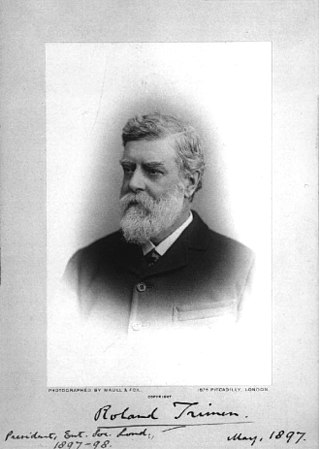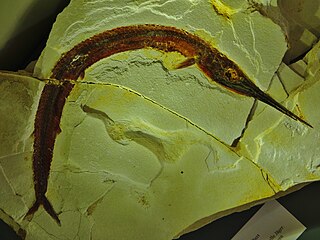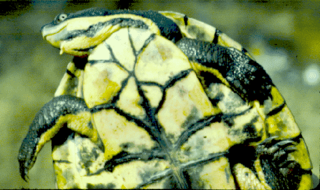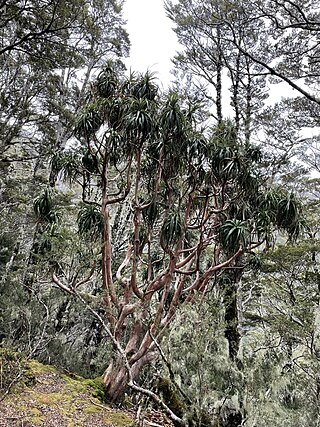
Asteraceae is a large family of flowering plants that consists of over 32,000 known species in over 1,900 genera within the order Asterales. The number of species in Asteraceae is rivaled only by the Orchidaceae, and which is the larger family is unclear as the quantity of extant species in each family is unknown. The Asteraceae were first described in the year 1740 and given the original name Compositae. The family is commonly known as the aster, daisy, composite, or sunflower family.

Anseriformes is an order of birds also known as waterfowl that comprises about 180 living species of birds in three families: Anhimidae, Anseranatidae, and Anatidae, the largest family, which includes over 170 species of waterfowl, among them the ducks, geese, and swans. Most modern species in the order are highly adapted for an aquatic existence at the water surface. With the exception of screamers, males have penises, a trait that has been lost in the Neoaves, the clade consisting of all other modern birds except the galliformes and paleognaths. Due to their aquatic nature, most species are web-footed.

Sea cucumbers are echinoderms from the class Holothuroidea. They are marine animals with a leathery skin and an elongated body containing a single, branched gonad. They are found on the sea floor worldwide. The number of known holothurian species worldwide is about 1,786, with the greatest number being in the Asia–Pacific region. Many of these are gathered for human consumption, and some species are cultivated in aquaculture systems. The harvested product is variously referred to as trepang, namako, bêche-de-mer, or balate. Sea cucumbers serve a useful role in the marine ecosystem as they help recycle nutrients, breaking down detritus and other organic matter, after which bacteria can continue the decomposition process.

The chachalacas, guans, and curassows are birds in the family Cracidae. These are species of tropical and subtropical Central and South America. The range of one species, the plain chachalaca, just reaches southernmost parts of Texas in the United States. Two species, the Trinidad piping guan and the rufous-vented chachalaca occur on the islands of Trinidad and Tobago respectively.

The chasers, darters, skimmers, and perchers and their relatives form the Libellulidae, the largest family of dragonflies. It is sometimes considered to contain the Corduliidae as the subfamily Corduliinae and the Macromiidae as the subfamily Macromiinae. Even if these are excluded, there remains a family of over 1000 species. With nearly worldwide distribution, these are the most commonly encountered dragonflies.

Crevice weaver spiders (Filistatidae) comprise cribellate spiders with features that have been regarded as "primitive" for araneomorph spiders. They are weavers of funnel or tube webs. The family contains 18 genera and more than 120 described species worldwide.

Brittle stars, serpent stars, or ophiuroids are echinoderms in the class Ophiuroidea, closely related to starfish. They crawl across the sea floor using their flexible arms for locomotion. The ophiuroids generally have five long, slender, whip-like arms which may reach up to 60 cm (24 in) in length on the largest specimens.

Roland Trimen FRS was a British-South African naturalist, best known for South African Butterflies (1887–89), a collaborative work with Colonel James Henry Bowker. He was among the first entomologists to investigate mimicry and polymorphism in butterflies and their restriction to females. He also collaborated with Charles Darwin to study the pollination of Disa orchids.

Tube-dwelling anemones or ceriantharians look very similar to sea anemones but belong to an entirely different class of anthozoans. They are solitary, living buried in soft sediments. Tube anemones live inside and can withdraw into tubes, which are composed of a fibrous material made from secreted mucus and threads of nematocyst-like organelles known as ptychocysts. Within the tubes of these ceriantharians, more than one polyp is present, which is an exceptional trait because species that create tube systems usually contain only one polyp per tube. Ceriantharians were formerly classified in the taxon Ceriantipatharia along with the black corals but have since been moved to their own class, Ceriantharia.

Spirorbis is a genus of very small polychaete worms, usually with a white coiled shell. Members of the genus live in the lower littoral and sublittoral zones of rocky shores. Spirorbis worms usually live attached to seaweeds, but some species live directly on rocks, shells or other hard substrates. Spirorbis was once thought to have a fossil record extending back into the Early Paleozoic, but now all pre-Bathonian spirorbins are known to be microconchids. The earliest members of genus appeared in the Miocene, but Oligocene finds may also be possible. The genus contains the following species:

Dendrochirotida are an order of sea cucumbers. Members of this order have branched tentacles and are suspension feeders. Examples include Thyonella and Cucumaria.

Sinemys is an extinct genus of turtle from the Late Jurassic to Early Cretaceous of China. Three species have been named: S. lens, the type species, from the Kimmeridgian-Tithonian of Shandong; S. gamera, from the Valanginian-Albian of Nei Mongol, and S. brevispinus from Early Cretaceous of Nei Mongol. S. wuerhoensis, from the Aptian-Albian of Xinjiang, is not referrable to this genus. Specimen that may be belong to this genus were also known from Japan, although later abstract considered it as indeterminate sinemydid. The species S. gamera is noted for the presence of a pair of elongate spines projecting outwards and backwards from seventh costal of the carapace. These may have served a hydrodynamic function.

Aspidorhynchidae is an extinct family of ray-finned fish from the Mesozoic Era. It is the only member of the monotypic order Aspidorhynchiformes. Members of the group are noted for their elongated, conical rostrums, of varying length, formed from fused premaxillae. The range of the group extends from the Middle Jurassic to the end of the Maastrichtian, with a potential record from the Late Paleocene. The family and order were described by Pieter Bleeker in 1859.

Melyridae are a family of beetles of the superfamily Cleroidea.

The Myuchelys is a genus of turtles, the Australian saw-shelled turtles, in the family Chelidae and subfamily Chelodininae. They inhabit the headwaters and tributaries of rivers within their range and this led to the name Myuchelys, which is formed from the Aboriginal word myuna meaning clear water and the Greek chelys meaning turtle. They have a short neck and the intergular scute completely separates the gular scutes. They have no alveolar ridge separating them from the snapping turtles of the genus Elseya.

Sclerodactylidae is a family of sea cucumbers, marine invertebrates with elongated bodies, leathery skins and tentacles.
Menzbieria is a genus of parasitic alveolates of the phylum Apicomplexa.

Eupentacta is a genus of sea cucumbers found in coastal waters in tropical and temperate regions.

Dracophyllum traversii, commonly known as mountain neinei, grass tree, and pineapple tree is a species of flowering plant in the heath family Ericaceae. It is a deciduous tree endemic to New Zealand. It reaches a height of 0.2–13 m (0.66–42.65 ft) and has leaves which form tufts at the end of its branches. It has a lifespan of between 500 and 600 years.
Pseudocucumis may refer to two different genera:

















